Reef Safe Large Angelfish: Top Picks for a Peaceful Tank
Among the most popular fish for saltwater aquariums, Large Angels adapt well to captivity. They feed on micro and
macroalgae, zooplankton and sponges. Don’t place Angels from the same genus into the same tank because they will fight each other.
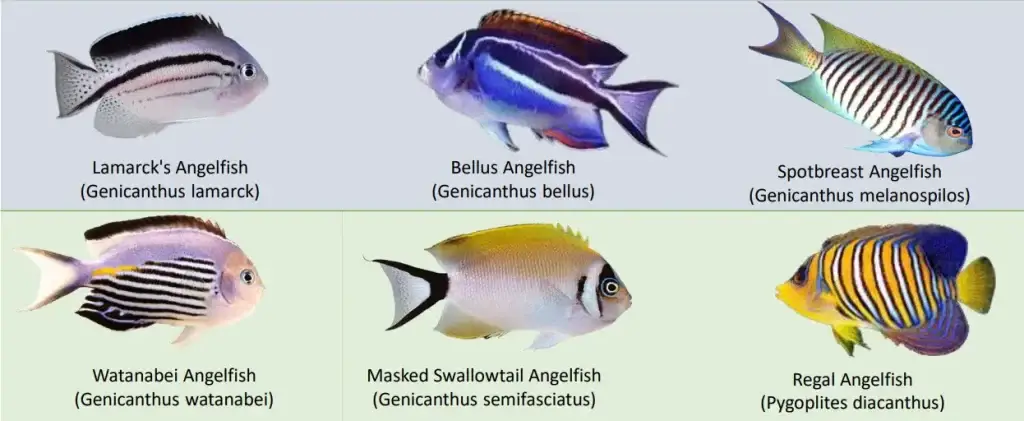
i. Lamarck’s Angelfish
One of the most docile species from the Genicanthus family, the Lamarck’s Angelfish is a popular choice for aquarists.
Despite its size, this fish feeds only on Zooplankton, and doesn’t care about sponges or corals.
Reef-Compatibility Cautions :
This fish is an excellent candidate for mixing with corals or other angelfish, but it won’t tolerate other males from the same
genus. They might chase smaller planktivores such as Flasher Wrasses, Fairy Wrasses, or Fire Gobies.
- Minimum Tank Size: 125 gallons
- Mature Size: 10 inches
- Care Difficulty: Intermediate
- Diet: Planktivore
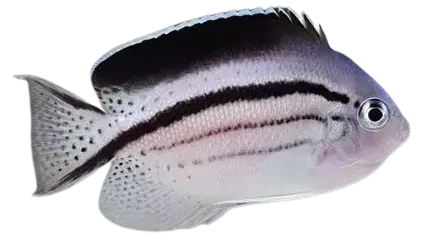
ii. Bellus Angelfish
The Bellus Angelfish is one of the smallest fish of the Genicanthus genus, even though it’s not a dwarf
species. The males and females are easily differentiated by the color of the dorsal fin, as males have an orange
dorsal fin while females have it black.
Reef-Compatibility Cautions :
The Bellus Angelfish are social and thrive in small groups of their own kind, but there should be only one male per
tank to not fish each other. They are considered reef safe and not interested in corals.
- Minimum Tank Size: 120 gallons
- Mature Size: 7 inches
- Care Difficulty: Intermediate
- Diet: Omnivore
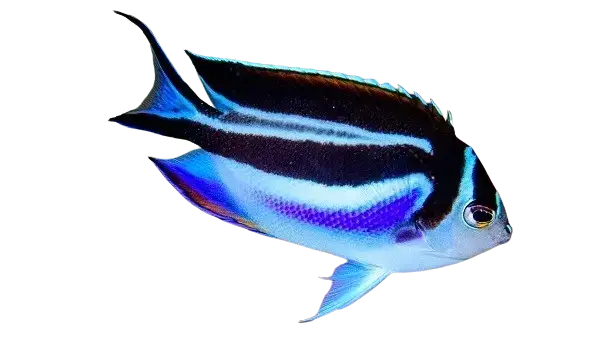
iii. Spotbreast Angelfish
The Spotbreast Angelfish is a beautiful addition to any saltwater, being one of the few fish considered 100% reef safe
angelfish. They don’t bother corals, clams or other angelfish.
Reef-Compatibility Cautions :
As with other fish from Genicanthus genus, Spotbreast Angelfish males shouldn’t be kept together because they will fight each
other. It will ignore other fish species, including non-related angelfish.
- Minimum Tank Size: 125 gallons
- Mature Size: 7 inches
- Care Difficulty: Moderate
- Diet: Omnivore
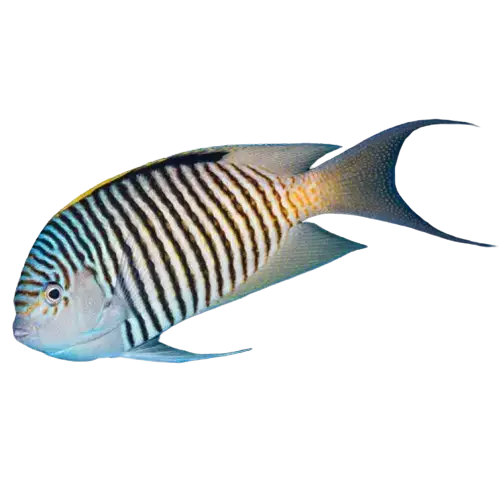
iv. Watanabei Angelfish
The Watanabe’s Angelfish is one of the few angelfish that display sexual dimorphism. The visual difference between
males and females is that males have long, horizontal dark stripes on the lower half of the body and the females don’t have
stripes. They prefer to be in pairs rather than solitary.
Reef-Compatibility Cautions :
Watanabe’s Angelfish eats zooplankton and is known to leave sponges and corals alone. It is considered reef safe in general, but
certain fish might start attacking corals and other reef creatures.
- Minimum Tank Size: 100 gallons
- Mature Size: up to 6 inch
- Care Difficulty: Moderate
- Diet: Planktivore
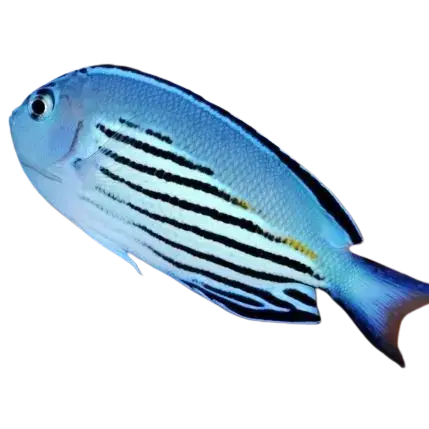
v. Regal Angelfish
The Japanese Masked Swallowtail Angelfish is a beautiful addition to a reef tank, and it will bring a lot of beauty and
personality to it. The males and females are very different from each other, males having a yellow “mask” and black stripes
along the body while females have a “black” mask and no stripes. Females can change to males if no dominant male is present,
and the change is irreversible.
Reef-Compatibility Cautions:
The Masked Swallowtail Angelfish is considered reef safe and will not nip on corals and clams. As with other large angelfish,
two males from the same species shouldn’t be placed in the tank or they will fight each other. They can be kept in pairs or with
a small harem. You can even put only females in the tank, as one will turn into a male eventually.
- Minimum Tank Size: 100 gallons
- Mature Size: 8 inches
- Care Difficulty: Intermediate
- Diet: Planktivore

vi. Masked Swallowtail Angelfish
Of all the fish you can keep in a reef tank, the Regal Angelfish is the most beautiful. However it is also one of the most
difficult fish to keep for a novice reefer. There is no color difference between males and females.
Reef-Compatibility Cautions:
If well-fed, Regal Angelfish don’t nip on corals and other invertebrates in the reef tank. They have a hard time adapting to a
reef tank habitat, and that’s why you should always quarantine it until the fish gets used to being fed. The lack of distractions
from other fish will help it adapt faster
- Minimum Tank Size: 100 gallons
- Mature Size: 10 inches
- Care Difficulty: Expert
- Diet: Omnivore
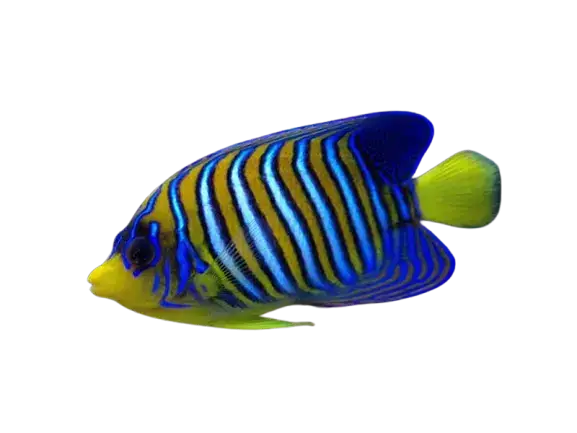
Conclution:
Reef Safe Large Angelfish are among the top choices for saltwater aquariums, known for their stunning colors and compatibility with various tank setups. These majestic fish thrive on a diet of micro and macroalgae, zooplankton, and sponges. In this video, we explore the best types of reef-safe large angelfish, how to set up an ideal environment, and essential care tips to keep them happy and healthy. Learn about their behavior, compatibility, and which species are best suited for a peaceful community tank. Avoid common mistakes, like housing multiple angelfish of the same genus, as they may compete for territory. Watch till the end to discover how to create a vibrant and harmonious saltwater aquarium with these gentle giants. Whether you’re a beginner or an experienced aquarist, these insights will help you succeed with reef-safe large angelfish. Subscribe for more saltwater aquarium tips and updates!